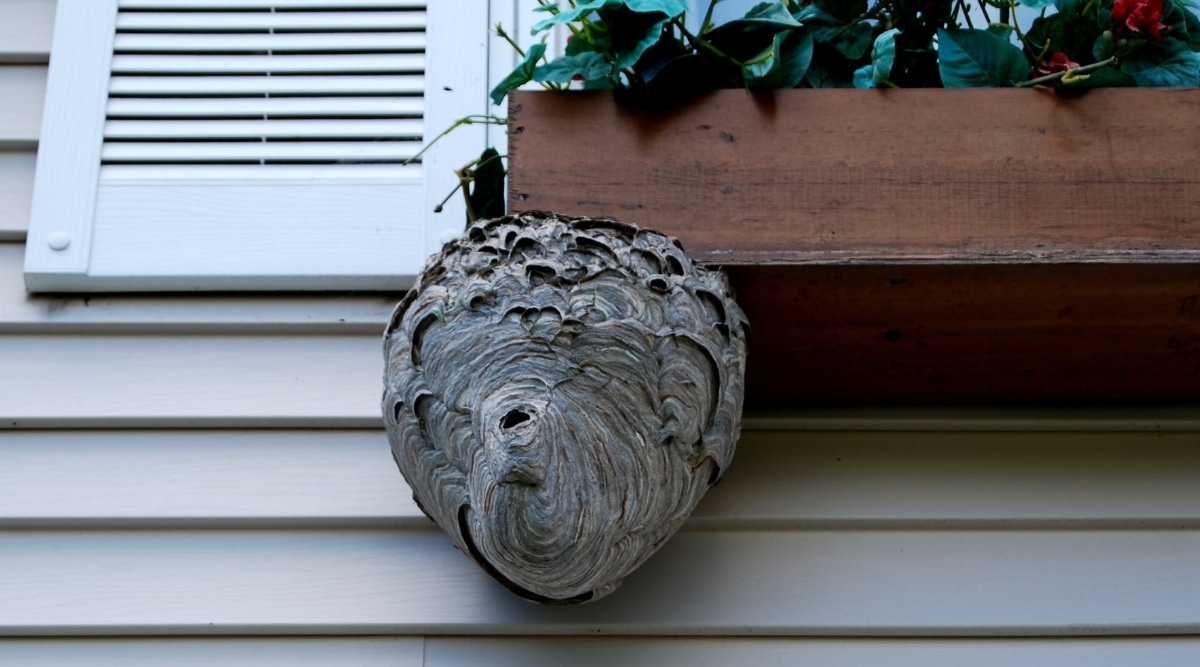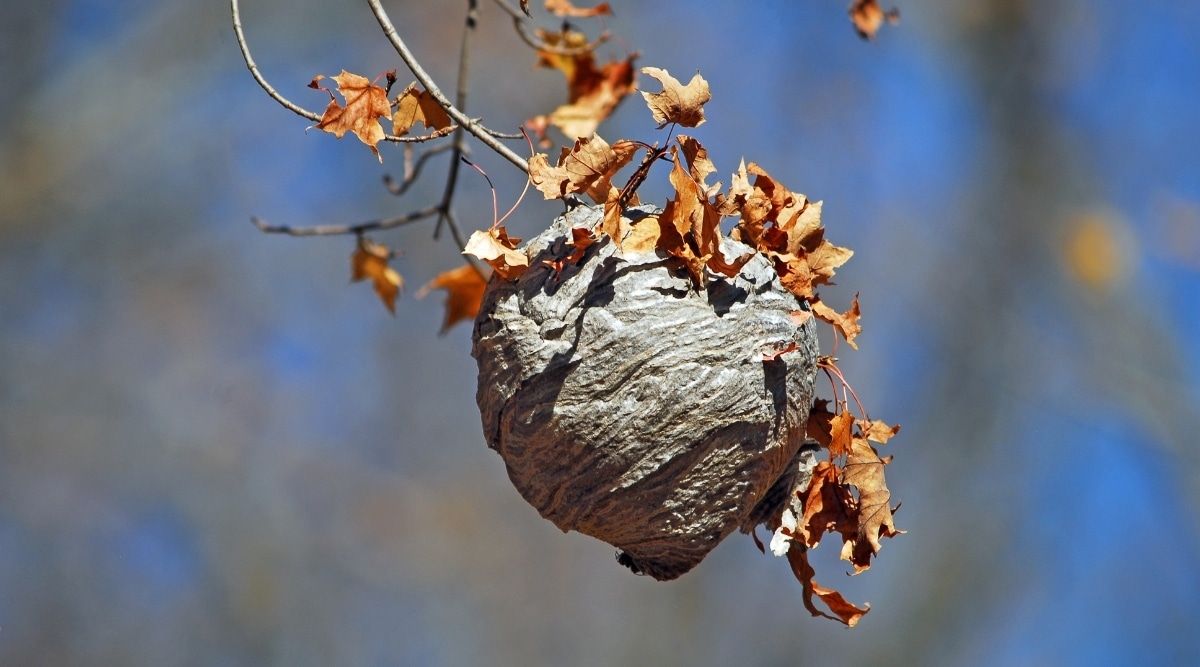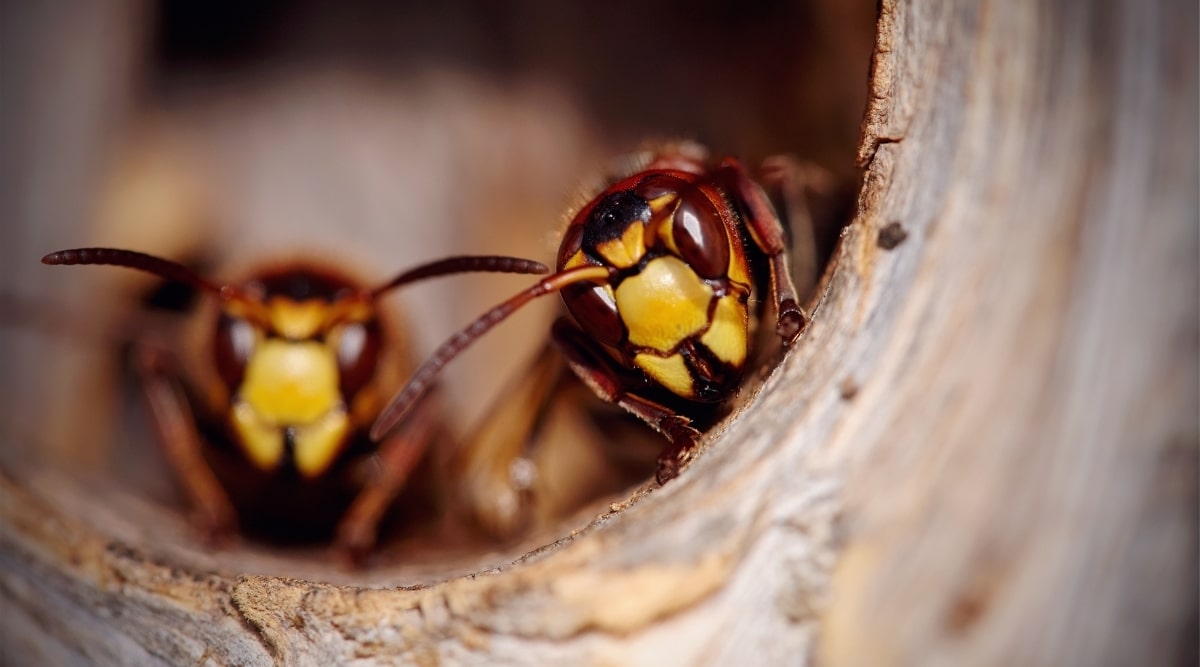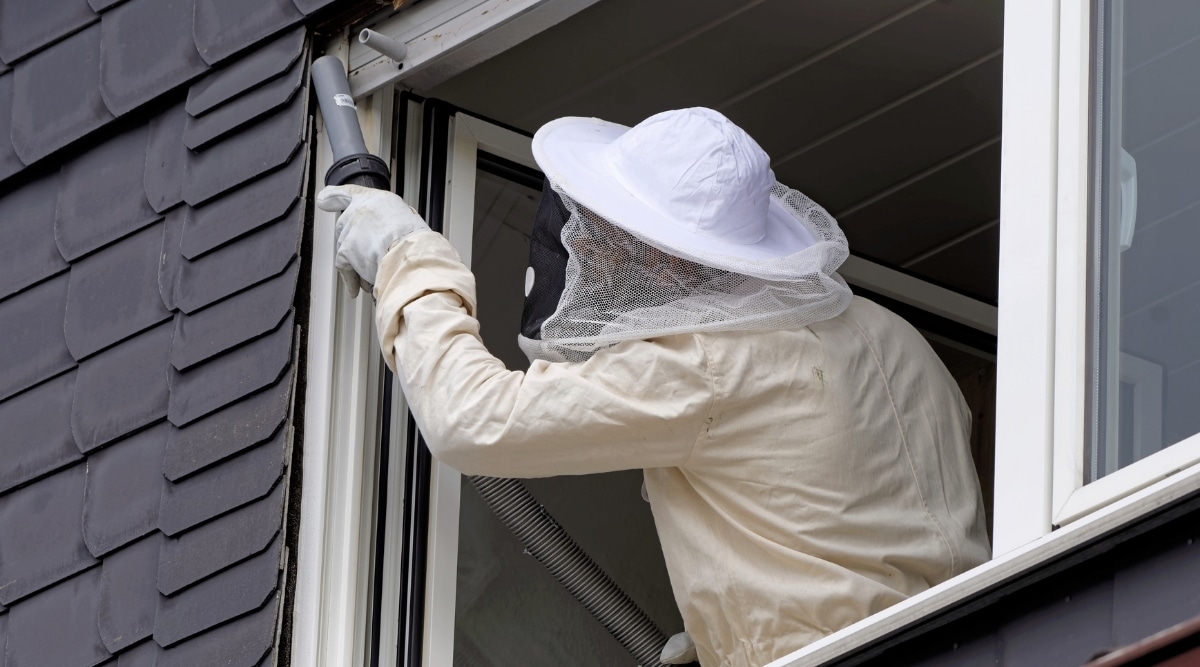Hornet Nest Removal: How To Get Rid Of Hornets
Think you've found a hornet's nest in your yard and want to attempt to remove it yourself? Many homeowners attempt pest removal around their home, including hornets. If you've decided you want to figure out how to remove a hornet's nest on your own, there are a few steps you'll need to follow. Find out how you can safely and easily eliminate your hornet problem for good!

Hornet nest removal can be a tough process that is highly dangerous without extra precautions. Typically, having a licensed professional come and take care of them for you is the easiest solution. But if you’re here, chances are you’d rather DIY.
So do not fear! There are a few steps you’ll need to take in order to get rid of a hornet’s nest around your home. This can be tricky. You’ll want to make sure you have the proper gear and take the proper precautions.
Again, if you are unsure of your ability to perform the following steps, we recommend reaching out to a trained professional. But if you are physically capable of handling the following tasks, there’s no reason you can’t take care of business on your own. Let’s jump in!
Where are Hornet Nests Located?

A hornet begins a nest for one main reason…to nest her eggs. Just like we have a home to protect our children from harm, a hornet keeps her young in a nest for safety from the outside world. Depending on the size of the colony, it can be as big as a soccer ball or as small as a golf ball!
According to the UK Entomology, thousands of hornets can be found beneath the walls of their nests. The easily annoyed hornets are not the type of pests you want to mess with!
The hornet nests are located in places such as trees, attic beams, creases in houses, bushes and many others concealed areas. But when you find a hornet nest, no need to fear! This article prepares you for all the right techniques for hornet nest removal.
Hornet Nests vs. Other Insects
Many other stinging insects including bumblebees, honey bee’s, yellowjackets, and wasps also have nests. But what is the difference among them? To start, bumblebee’s nests are found mostly on ground level or underground. They can be seen in areas such as grassy fields or empty rodent holes, according to BuzzAboutBee’s.net.
However, they can also be found in places such as bird boxes, tree’s, and bushes. Many of these nests are messy and chaotic inside. This differs from the honeybee’s nests. Their home is much more orderly, consisting of close-knit hexagonal cells making up the structure. Their nests are commonly found inside walls of buildings or houses.
This is very similar to the nests of yellow jackets, which also find homes snuggled into a wall. The two are very similar in many aspects and can be easily confused, but the two can be distinguished by their color. The honeybee is fuzzy and yellowish-brown, while the yellow jacket is a sharp yellow color with black patterns. Finally, wasp’s nests are most commonly found on fences and pieces of dead wood.
Wasps start from scratch and build their nests using the materials inside of wood to make their home. By knowing these simple characteristics of different nests, you can pick out whether what you’ve found is indeed a hornet’s nest or another irritating insect’s.
Related: Why do hornets attack? 3 reasons, and steps to take to avoid it happening.
Do Seasons Affect the Type of Nest it is?
Seasons affect the type of nests you may have by your house. Bumble Bee’s for example, only nest during the season of fall. Once winter hits, the bumblebees will be out of their nests for good.
The honeybee’s nest however, is much different, and can last for years on end. If you notice a nest that has been in the same place for over a year, you may be facing a honeybee’s lair instead. However, yellow jackets are “annual insects” and by winter, they also leave their nests, according to Iowa State University.
The wasp nests thrive in the summer and autumn months. Winter is full of hibernation and the spring consists of preparing and building their nests. This leads us to the hornet nest, which can only be used one time. When winter comes, the worker hornets die, leaving only the fertilized female insects to wait until spring to make new nests and colonies.
So, to recap depending on what the nest looks like and what season you notice it in, you can use process of elimination to decide whether or not it belongs to hornets. If the nest if found between the middle of spring and the end of fall, and located in a concealed area such as a tree or attic beam, it is most likely that of a hornet.
Hornet Nests Removal

Patience is a key with nest removal. While seeing a hornet nest around your house or an area you commonly go, may be scary at first. You should exterminate it only if it poses as a threat to you. You can simply avoid walking directly in a path of a nest if you know the location.
Just because you see a nest, doesn’t mean it needs to be removed. For example, if it’s found in a high tree, when the leaves have fallen for the season, should not be removed. Hornets hold a very vital role in our environment, and eliminating every nest we see, isn’t healthy for our ecosystem.
Now let’s get down to business. When is it okay for hornet nest removal on your own? Once you have decided that the hornet’s nest is in a place that cannot be avoided and possibly hazardous, you can examine its size.
Step One
If it is just beginning, (in the early months right after winter) and is still under the size of a tennis ball, you can remove it yourself. Use a hard object such as a brick, and slam it on top of the nest. If it is hanging from a branch, this may be too difficult. By doing this, you have flattened the surface. It will not expand in size or in hornets. Do not try to pick it up or mess with it after you have flattened it.
If the nest is much larger and further along in its development, flattening with a brick is not a good choice. First, you should mark the area that contains the hornet nest with yellow caution tape. You can also mark it with a red flag, or other markings that will keep visitors away.
Step Two
The next step is to buy a pressurized can of wasp/hornet jet spray. Jet spray has a higher distance and greater force to push out the spray. Other cans may only spray out a light mist a couple feet away. Although the brand does not matter, make sure to buy something labeled with “jet spray” in order to fully achieve hornet nest removal.
Once you have bought your spray, find a good time in the evening to begin the process. You want to do it later in the night such as 9 or 10 PM, when the worker bees are asleep in their nests. In order to see you need to use a flashlight, however the light can awaken the hornets. That is not something you want to happen, so use a red filter on the flashlight.
According to Indiana Public Media, insects cannot see red light, including hornets. Using this type of light will allow you to see where the nest is, but not enough light to wake up the irritating insects below.
Step Three
When you reach the place you have marked, spray the can straight into the nest. Do not spray lightly and for only a couple seconds. This will be very ineffective and most likely not solve the problem.
For accurate hornet nest removal, make sure to directly spray the hole thoroughly and forceful. In order to fully remove hornets, make sure to spray the bottle for at least ten seconds. Once you have completed this, walk away from the nest as quickly as you can.
It is possible that the hornet’s can fly out of their nests, quite upset, and you don’t want to find out how mad they are!
If you are spraying a nest that is located on the ground, make sure you cover it up with dirt, before leaving. Tell your kids and other family members not to go around the site for a minimum of a day.
Step Four
After there is no activity in the nest, remove it from its location. Before you take it down you must be positive there is no movement left, then spray into the hole one more time. This is because there is a possibility that during the night some of the bees left and did not get poisoned. Next, simply cut the nest down and seal it into a trash bag.
Tips to Remember When Removing Hornets

The most important information you can remember about hornet nest removal is to ensure that you are completely protected from any dangers it may have. Here is a few tips to help you feel as safe as possible.
1.) Just like it said above, make sure to go during the night when all the hornet activity has stopped! You wouldn’t want to remove it when the hornets are out and about, swarming around their nest.
2.) Wear clothing that is suitable for the job. Make sure the shoes you have on will not make noise as you scamper through your yard. For extra protection, wear closed toe shoes that protect your feet from possible hornet stings. Boots would be the best fit for the job in case any hornets sneak out of the nest; your feet and legs are completely covered. Wear thick, rubber gloves to ensure that you don’t get any spray on your hands, but also for the safety of the hornets. Finally, if you own coveralls, wear them. If not, make sure to wear long sleeves, and long pants, made with thick material.
3.) As you walk across your yard, or wherever you need to go to get to the location of the hornet, try to be as quiet as possible. Don’t step on dried up leaves and make crunching noises, or step on twigs and make cracking noises. You don’t want to wake up any hornets, so be gentle on your feet.
4.) Make sure to use a red filter flashlight, so the light will not arouse the hornets.
5.) Leave the site as soon as possible, and do not let anyone go around the site for at least a day, if not more.
Problems With Hornet Nest Removal Yourself
While there are many benefits of removing a hornet nest yourself such as more affordable, easier, and quicker, there are also downsides.
For example, if the steps aren’t followed correctly, the hornets could swarm out and sting you. This is especially common when using jet spray. Spraying in their home can easily agitate the hornets, and encourage them to come out and fight the predator. Another problem with large colonies is after the spray penetrates into the nest. This means a bad smell will remain for the following days.
Calling For Help

Some people don’t feel comfortable with hornet nest removal themselves. That’s okay! There are plenty of exterminators in the area that you can call for. However, you must be aware that these can become very lengthy, sometimes even 3-4 visits before the hornets can be removed.
If the problem is urgent and needs to be fixed within a couple days, an exterminator isn’t the best idea. Also, exterminators will be much more expensive then doing it on your own. However, there are also many pro’s to calling for help. First of all, they are professional workers who do this as their job.
They probably know a little bit more about removing hornet’s nests then you do. If you aren’t sure you can efficiently remove it on your own, call an exterminator for the best results. Also, there will be no risk of being stung by any hornets, if you are afraid of them. Finally, the last and biggest reason you should call an exterminator is if you are allergic to hornet stings.
NEVER should you try to remove any type of hornet’s nests on your own. Nothing is worth risking your life, when you can call an exterminator, who would be happy to help.
Ways to Avoid Hornet’s Nests
You can’t completely ensure that you will never have a hornets nest flourish in your yard, however taking a note on these few helpful tips to lessen the chances of hornets in your yard.
First of all, hornets feed off of food such as rotting fruit cores, garbage, and recycling bins. If any of these are in your yard, out in the open, it will increase the chance of a hornet colony sprouting in your yard. Also, if you see a hornet in your yard do not swat it and try to kill it. Walking away is much more beneficial, because when you kill the hornet, a chemical is released to attract other hornets to the area, Earth Easy tells us.
With this complete guide on what a hornets nest looks like compared to others, you should be able to take care of business. You should now know to successfully complete hornet nest removal, when to do it yourself and when to leave it to the exterminator. You are officially set to conquer any hornet problem!
Share this post
Save time and money on pest control
Subscribe to expert DIY pest control tips, pest control product reviews and information.




